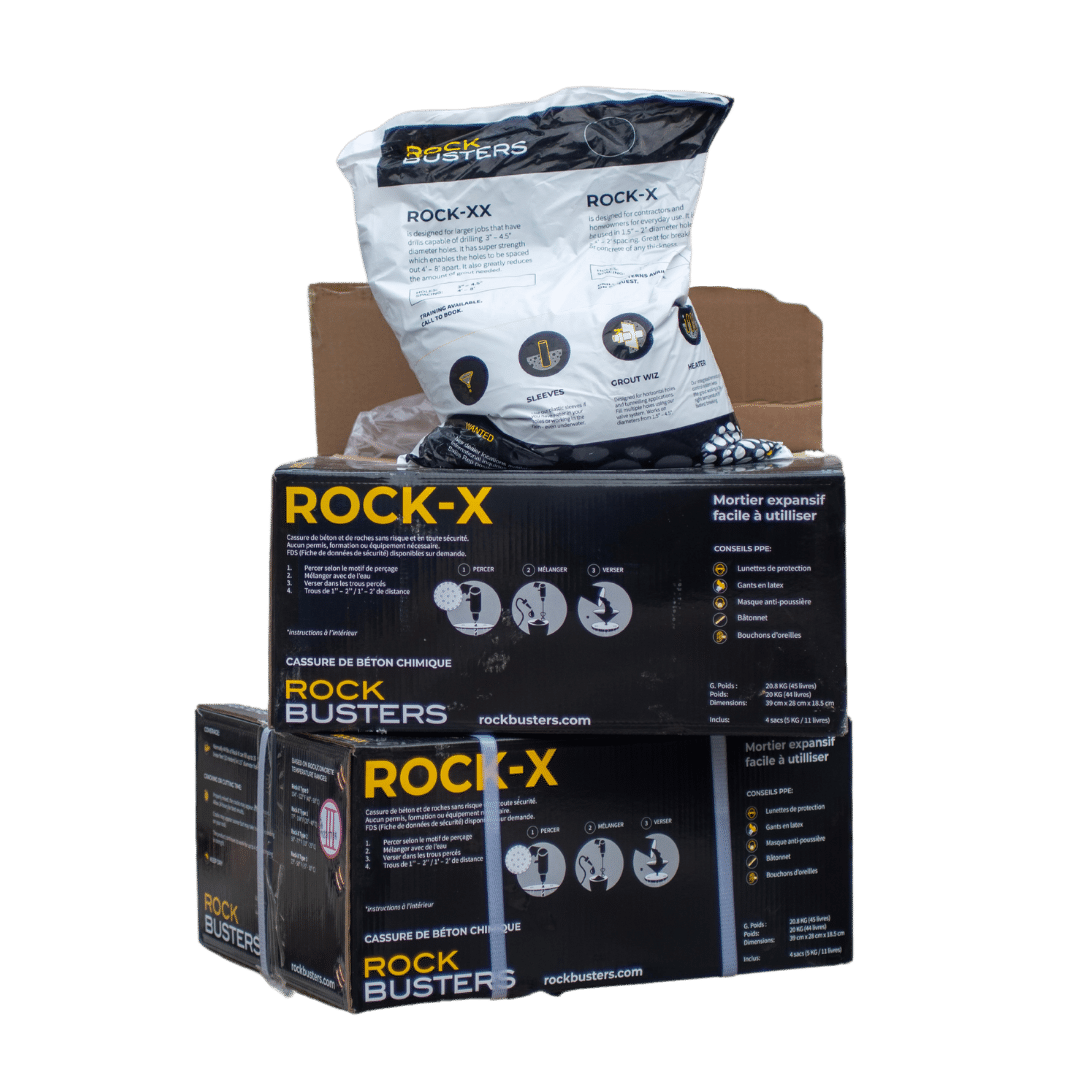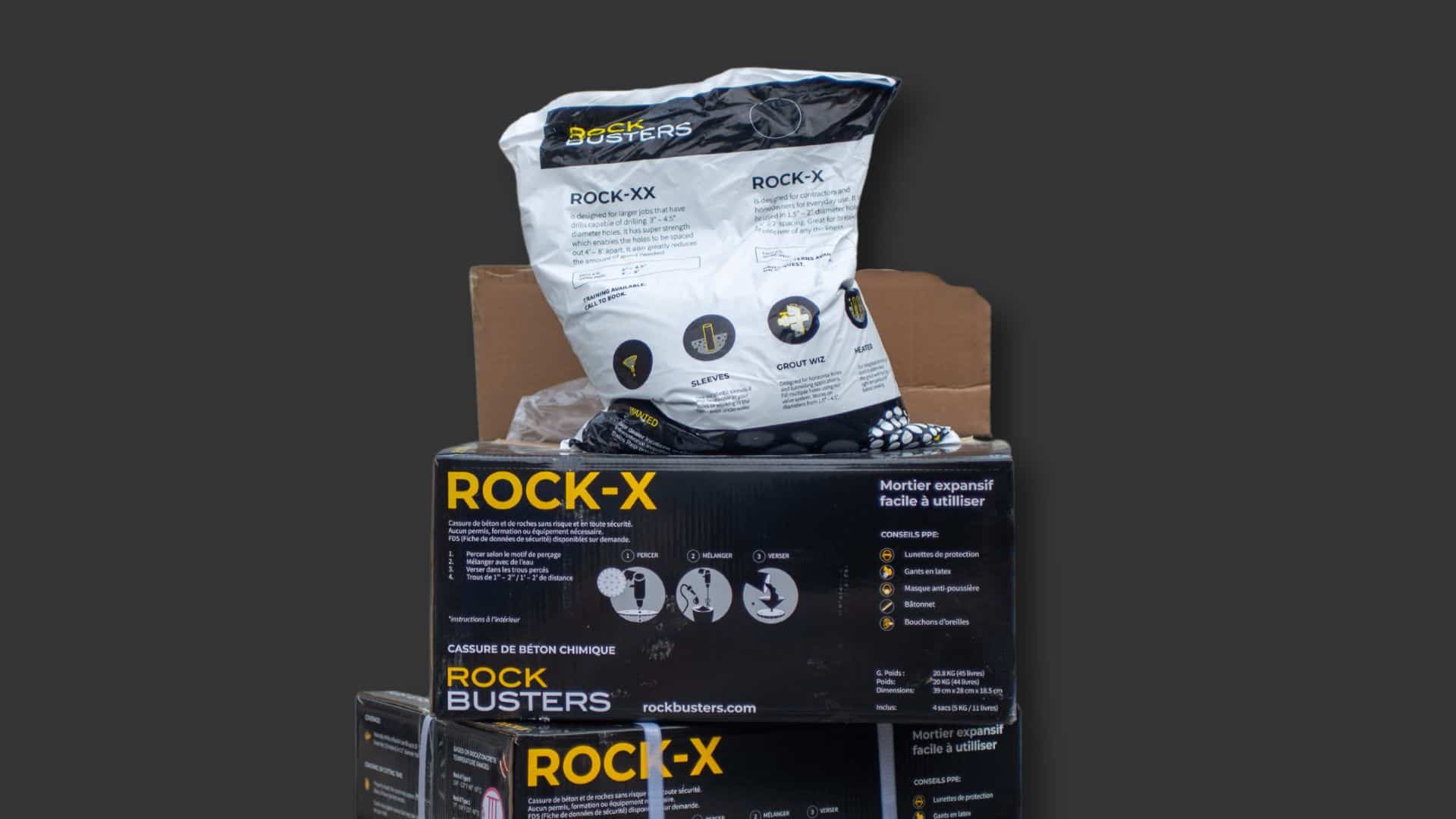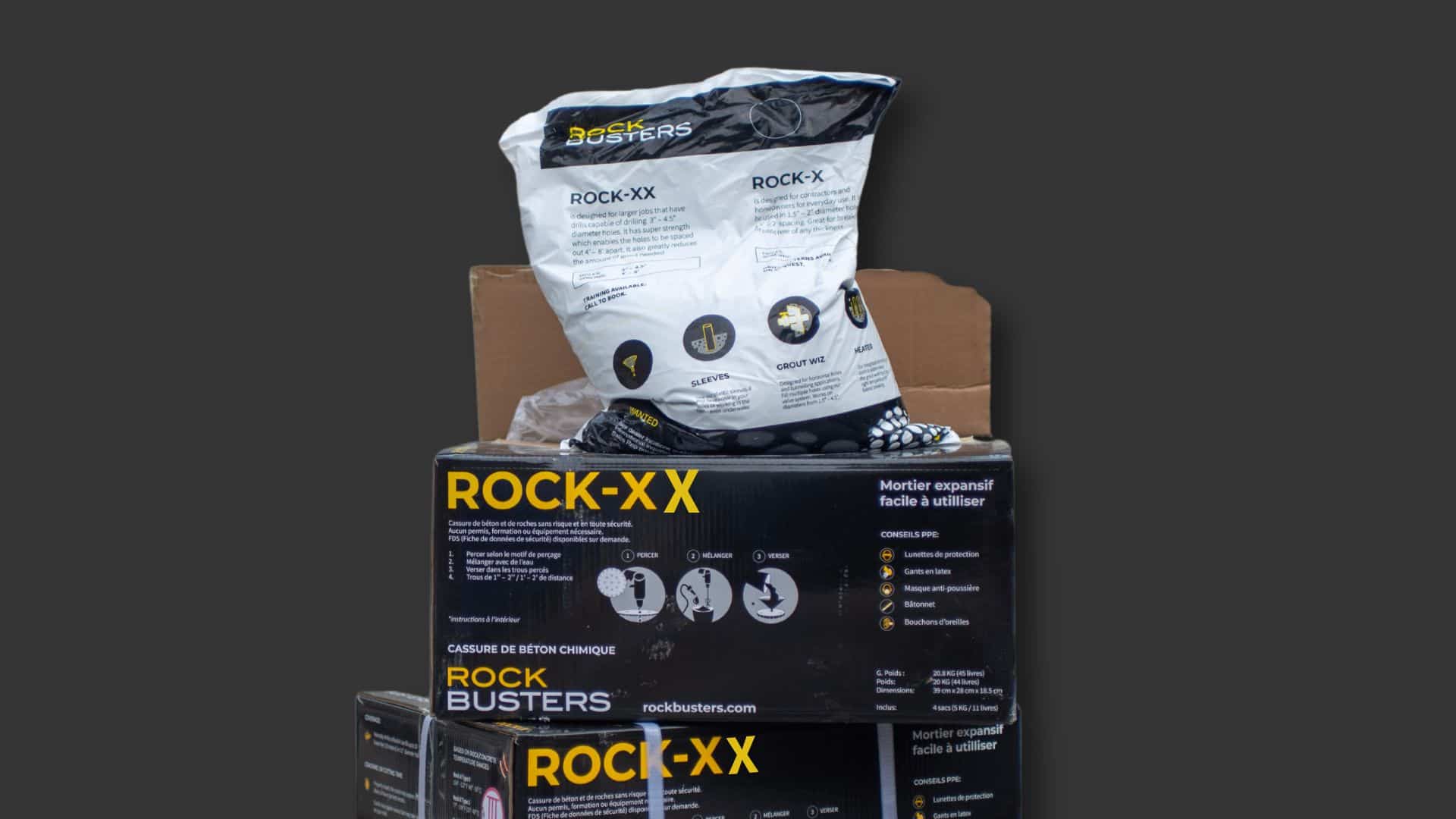We’ve replaced Black Gold with
ROCK-XX
…. our new and improved expanding grout product. Check out the best expanding grout on the market for ‘Big Drills’

All our grout products are:
Easy to use
Expanding grouts don’t require any permits or specialized training to be used! Anyone can be properly trained to use expanding grouts in a matter of minutes and NexPro and Black Gold can be bought over the counter. As easy as 1, 2, 3! Drill your holes, mix the slurry, pour it in and let it work its magic! Our hassle-free expanding grouts give you peace of mind that your breaking job can be done easily and efficiently.
Reduce safety risk
Explosives and heavy rock breaking equipment pose safety concerns for people, property and the environment around the job site. When you choose expanding grout the risks of noise, vibrations, fly-rock and expansion gases are eliminated!
Cost effective
Our products ensure you can get your rock-breaking done at a fraction of the cost of the alternatives. Whether you’re considering explosives, heavy equipment rentals or jackhammers, the value of expanding grout cannot be beaten.
Environmentally friendly
All our expanding grouts pose no risk to the environment. They release no toxic fumes, leave no residue and easily wash away with water. They are safe to use, even in environmentally sensitive areas and have been endorsed by environmental consulting firms.
Not sure how much grout your need? Utilize our
Grout Calculator
Want to purchase grout? Connect with us to buy now.
Expanding Grout FAQ
What are the typical errors individuals tend to commit when it comes to bedrock, boulder, and concrete breaking with expanding grout?
-
Neglecting Comprehensive Reading: A common oversight is failing to thoroughly read and digest the User Guide, instructions, and FAQs provided.
-
Inappropriate Grout Selection: Another prevalent mistake is selecting the wrong type of grout for the job at hand.
-
Ignoring Expansion Requirements: Overlooking the necessity of providing adequate expansion space for the concrete or rock to fracture and disintegrate when using grout.
-
Incorrect Hole Dimensions: Using holes with the wrong diameter or spacing them too far apart can lead to ineffective results.
-
Shallow Material Depth: Insufficient material depth can hinder the breaking process.
-
Impatience: Rushing the process by not allowing the grout a full 24-48 hours to achieve maximum expansion and facilitate wider cracking.
Why is meticulous planning of your drilling pattern absolutely essential?
The answer is straightforward: a thoughtfully crafted hole-drilling pattern brings about a range of significant advantages:
• Enhanced Grout Efficiency: A well-designed pattern maximizes the efficiency of your grout, ensuring it achieves the desired results.
• Cost Savings: By optimizing the pattern, you'll minimize grout consumption, leading to financial savings.
• Precision and Control: A carefully planned pattern enables precise and controlled breaking, minimizing the potential for unexpected outcomes.
• First-Time Success: With a strategic drill pattern, you increase the likelihood of completing the job correctly on the initial attempt.
• Structural Safeguard: Thoughtful planning helps protect any nearby sensitive structures from unintended damage.
Why is it crucial to guarantee ample open space around the bedrock, boulder, or concrete slated for cracking?
To achieve optimal results with grout, it's imperative to provide the material with an unobstructed surface or adequate room for expansion and subsequent fragmentation. Attempting to break rock or concrete that is completely enclosed on all sides inhibits the expansive pressure generated by the grout from effectively causing the material to crack and fracture.
How should I drill the holes?
Spacing, depth, and drill pattern should be adjusted based on:
• Project objectives
• Material density
• Presence of reinforcing
• Desired size of broken material
• Desired cracking time
• If you need to protect an adjoining structure
Why are empty relief holes essential in bedrock, boulder, and concrete breaking?
Drilling holes and intentionally leaving them unfilled can serve a multitude of strategic purposes, including:
• Facilitating Controlled Expansion: Unfilled holes provide vital expansion space for the material to fracture when it's enclosed or confined.
• Precision Cracking: These empty holes enable precise control over the cracking process, ensuring it follows the desired path.
• Grout Conservation: By strategically leaving some holes unfilled, you can reduce the overall amount of grout required for the operation.
• Accelerated Breaking: Empty holes can expedite the breaking process, helping you achieve your goals more quickly.
• Structural Protection: When necessary, unfilled holes allow for controlled breaking to protect specific parts of a structure.
• Fracture Guidance: These empty holes can direct the fracturing in a way that aligns with your project's requirements.
• Corner Creation: In applications such as forming openings or stone quarrying, unfilled holes play a pivotal role in shaping corners as needed.
What is the impact of drilling more holes, closer together?
More holes spaced closer together results in:
• Faster break times
• Smaller and more manageable pieces
• Adds labour cost (drilling & filling more holes)
• May increase quantity of grout used
• Reduces the cost of rubble removal
How big or small can I drill my holes?
For best results with ROCK-X, we highly recommend 1” diameter holes - do not exceed 2.5”.
For best results with ROCK-XX, we highly recommend 2.5” diameter holes - do not exceed 5”. Using smaller diameter holes will require holes to be spaced closer together and may NOT be successful in some materials.
Will grout work for ALL shallow applications?
No. For grout to be effective, we strongly recommend materials to be cracked be a MINIMUM of 3” in depth.
When is the best time to pour grout?
The best time to pour grout is early in the morning. An effective strategy is to drill holes the day prior, so you can pour first thing early the next morning. In cold conditions, add a tarp and a heater overnight.
What can cause expansive demolition grouts to blowout?
- Using the wrong grout type
- Pouring grout mixture into warm/hot holes
- Using warm water. In hot conditions, use cold or ice water
- Hole diameter is too large and too deep
- Adding grout and water to leftover mixture remaining from previously mixed batch
- Not measuring water or using too little water
- Too much time passing between beginning to mix and pouring into holes

Have a small/medium project? Checkout our
ROCK-X for smaller drilling projects.
Works great with standard drills! We have an Expanding Grout for everything!


